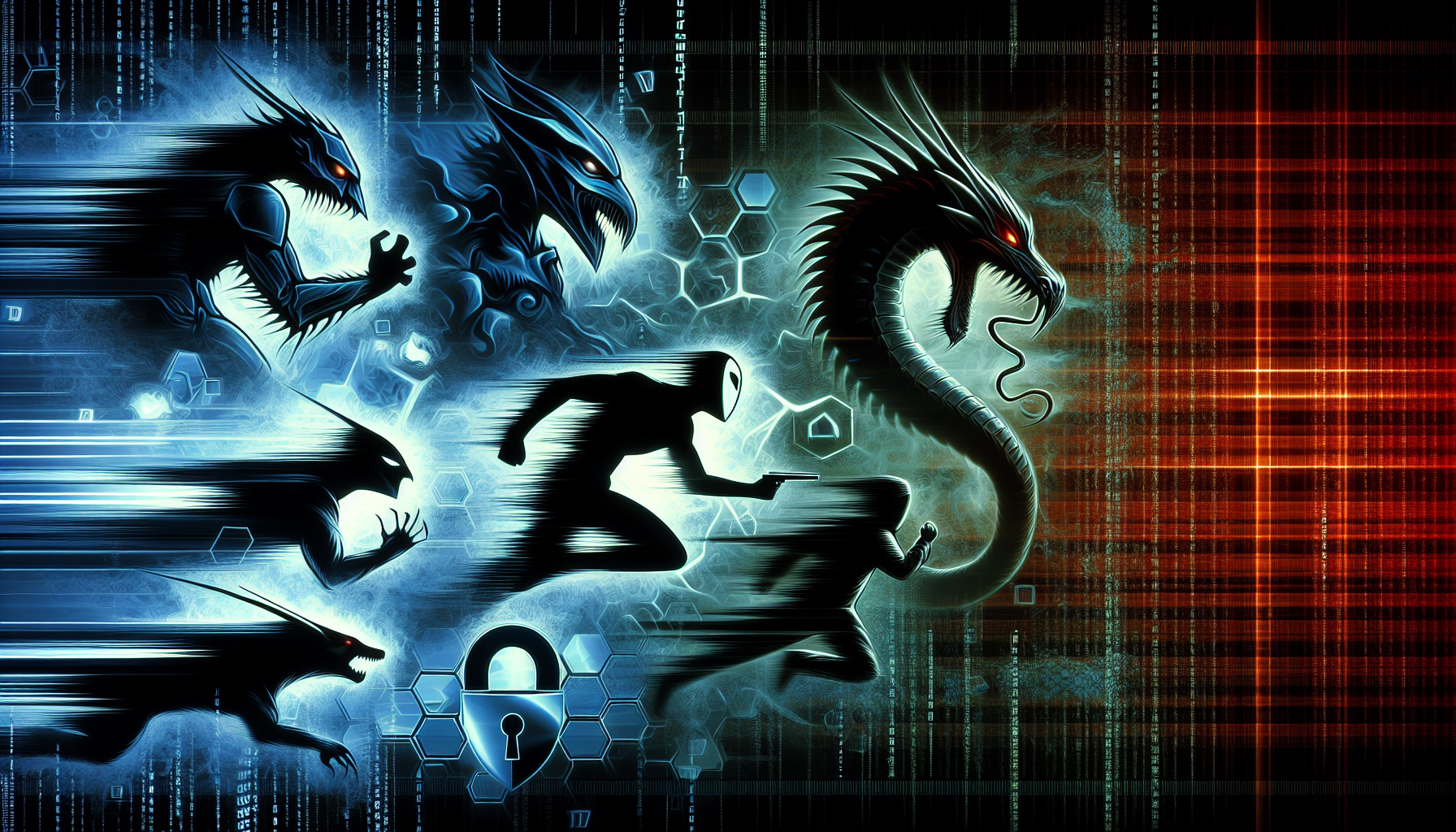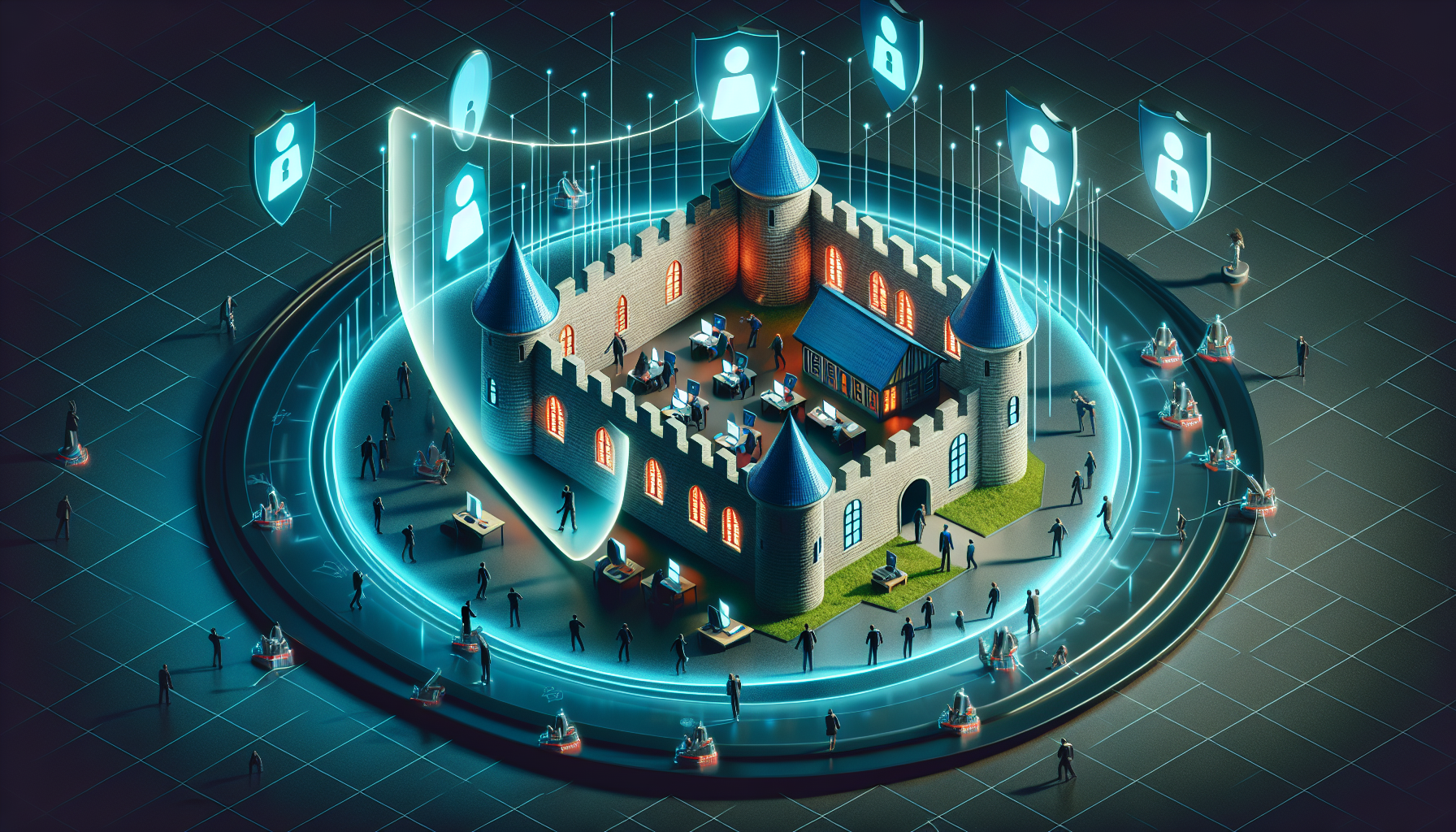Before you continue
To give you the best possible experience please select your preference.
To give you the best possible experience please select your preference.

Are you equipped to defend your business against cyber threats? In today’s digital battlefield, selecting the right business security solutions is pivotal. This guide distills essential strategies and defenses to safeguard your business, giving you a clear roadmap to strengthen your security posture without overwhelming jargon or sales pitches.
Businesses must employ agile and comprehensive cybersecurity measures, integrating sophisticated detection systems and responsive capabilities to combat modern cyber threats, emphasizing the importance of data encryption, access management, network security, and employee training.
Small and medium-sized businesses require adaptable and cost-effective cyber solutions to manage unique security challenges, with emphasis on endpoint security, cloud security, and advanced threat detection to ensure business continuity and data protection.
Ongoing vigilance through regular audits, clear security policies, and incident response plans are essential for maintaining an effective security posture against evolving threats, with case studies demonstrating strengthened resilience and the rebuilding of customer trust post-breach.
--> Discover Desktop Service Office - Security & Management

In an era where cybercrime metamorphoses with each passing day, businesses must embrace a forward-looking and agile approach to their cyber security strategies. The balance between defensive prowess, sophisticated detection systems, and responsive capabilities forms the backbone of an effective security posture that is primed to address the multi-faceted nature of modern cyber threats.
Embarking on the path of cyber resilience initiates with a thorough and unbiased evaluation of your existing cybersecurity readiness. This sets the foundation for a systematic plan to enhance your defenses.
The cornerstone of enterprise security, network security, acts as the first line of defense in protecting sensitive data, devices, and systems from the onslaught of cyber attacks. A robust network security strategy is not only vital for maintaining uninterrupted business operations but also for sustaining customer trust by preventing data breaches. A holistic protection approach, integrating advanced threat detection and a firm security stance, is required to guard against various threats such as malware, ransomware, and phishing.
In the digital realm, data is king, and safeguarding your business-critical data is paramount. Here are some key steps to ensure effective data security:
Encrypt data both at rest and in transit to fortify it against breaches and ensure compliance with privacy regulations.
Implement rigorous access management protocols, including data usage policies, to control who can view sensitive information.
Regularly update and patch your systems to protect against vulnerabilities.
Train your employees on data security best practices to minimize the risk of human error.
Monitor and audit your systems to detect and respond to any potential security threats.
By following these steps, you can protect your data and maintain your reputation, as well as protect your business.
Furthermore, consistent backups and the use of redundant arrays of independent disks (RAID) are key in ensuring data recovery and uninterrupted operation amidst data loss.
Identity and Access Management (IAM) systems serve as the gatekeepers of your technological resources, ensuring that access is granted only to those with the right privileges. By implementing Role-Based Access Control (RBAC) and zero-trust principles, IAM becomes an impregnable barrier against unauthorized access, significantly minimizing security risks.
The incorporation of Multi-Factor Authentication (MFA) into IAM systems adds an extra layer of security. It necessitates users to furnish multiple verification forms, considerably boosting system security.
--> Discover Desktop Service Office - Security & Management

Small and medium-sized businesses, which form the economic backbone, grapple with distinctive security challenges which call for adaptable and cost-effective cybersecurity solutions to protect businesses. Advanced threat hunting and mitigation are not just luxuries but necessities for these businesses to safeguard themselves from the increasing potential of cyber attacks.
With resources like effective email security solutions, these businesses can reduce administrative overhead while increasing their visibility and responsiveness to emerging threats.

The escalation in endpoint level cyber threats calls for sturdy protection solutions capable of safeguarding a wide spectrum of company devices. Endpoint protection solutions that leverage centralized management, alongside machine learning and threat intelligence, provide a multi-layered defense mechanism that is particularly suited for the dynamic landscape of cyber threats.
These solutions offer a comprehensive protection package, featuring:
malware and ransomware protection
VPN
patch management
risk analytics
advanced threat mechanisms like password theft detection and disk encryption.

With the adoption of remote work flexibility by small and medium businesses, securing operations and business continuity amidst diverse cyber threats has seen cloud-based security solutions playing a pivotal role. Integrated services like Qualys’s unified platform aid SMBs in managing their workload security while streamlining compliance and vulnerability scanning processes, preparing them to combat sophisticated threats like DDoS attacks.
--> Discover Desktop Service Office - Security & Management
Strengthening your security infrastructure represents a proactive measure in constructing an unassailable defense against the constantly evolving cyber threats. A key component of this robustness is the adoption of an incident response plan, which equips businesses to manage and mitigate the impact of security breaches effectively.
The development and implementation of comprehensive security policies are the scaffolding that supports a secure organization, ensuring every member knows the correct procedures to follow in the face of a disaster. Addressing critical areas such as remote working guidelines, strong password creation, and portable media usage, these policies are the blueprint for averting potential security breaches and serve as valuable security resources.
Regular updates to these policies, coupled with clear delineation of employee responsibilities, not only support regulatory compliance but also exhibit a company’s dedication to governance and societal impact.
By investing in regular and engaging training for employees on IAM best practices, organizations can significantly reduce the risk of breaches and instill a culture of security awareness. This education empowers employees to correctly use and maintain security systems, thus enhancing the effectiveness of technological defenses and demonstrating social responsibility.
Consistent security audits are a vital tool for:
Uncovering potential vulnerabilities
Offering businesses insights into the effectiveness of their current security strategies
Guiding improvement efforts
Reinforcing stakeholder confidence in the company’s security posture
Demonstrating a commitment to data protection
Ensuring that measures stay current with evolving threats and technology.
Businesses practicing transparency in their security measures not only protect their reputation but also uphold their credibility among customers. Through regular security audits, companies can provide insights into their security posture, thereby enhancing stakeholder confidence.
When a small business detected an unusual spike in server traffic, their advanced threat detection system immediately triggered alerts, allowing the IT team to analyze and identify the source of the suspicious activity. The presence of a firewall and the implementation of intrusion detection and prevention systems were instrumental in thwarting the cyber attack, ensuring that business operations continued without significant disruption.
A medium-sized enterprise, facing an increasing number of cyber threats, bolstered its security posture by implementing comprehensive cyber security solutions that included advanced threat detection and network security enhancements. Accompanied by thorough employee training, these measures resulted in a significant reduction in successful cyber attacks, fortifying the business’s overall resilience to security threats.
After experiencing a data breach, a company took decisive steps to enhance its data security measures, implementing an encrypted database system and establishing routine security audits to prevent future incidents.
The adoption of multi-factor authentication and stringent access reviews, such as bi-annual permission checks, not only mitigated the risk of data breaches but also rebuilt customer trust by showcasing a commitment to protecting their data through customer stories.
--> Discover Desktop Service Office - Security & Management

Looking ahead, emerging trends such as generative AI and the escalating adoption of hybrid architectures are establishing new benchmarks in security solution flexibility and efficiency. A distinction between security and safety applications is growing, with video surveillance analytics being used more for environmental and hazard monitoring, highlighting a shift towards a ‘total system’ perspective that considers the societal and environmental impacts of security solutions.
Technologies like Artificial Intelligence and Machine Learning are transforming the cybersecurity landscape. By analyzing vast amounts of data in real-time, these technologies enable early detection of cyber threats and enhance the ability to adapt to and predict future attacks.
Security platforms powered by AI and ML, such as CrowdStrike Falcon and Trellix Endpoint Security, offer centralized management and real-time adaptive threat hunting capabilities that integrate seamlessly into business ecosystems.
The digital connectivity between people, devices, and organizations has undoubtedly opened up a Pandora’s box of security vulnerabilities that cybercriminals are eager to exploit. The convergence of operational technology and the Internet of Things with mainstream IT systems necessitates businesses to manage these new risks, as the lack of standardization in IoT security poses challenges for compliance.
Adherence to data protection laws like The Data Protection Act is mandatory, and the implementation of robust security measures is vital to evade legal sanctions. Regular security audits and training that exceed the minimum standards of regulations are essential for companies to meet legal and standards expectations, highlighting the need for transparency in compliance efforts.
In summary, the journey through the intricate web of business security reveals an ever-changing battlefield where vigilance and adaptability are paramount. From the foundational network and data security measures to the sophisticated applications of AI and machine learning, each layer adds depth to a company’s defense strategy. As cyber threats morph and regulations tighten, businesses must remain a step ahead, bolstering their security posture with the latest innovations and best practices. Let this exploration serve as a guide and a reminder that in the realm of cybersecurity, the only constant is change, and the best defense is a proactive offense.
--> Discover Desktop Service Office - Security & Management
Business security involves protecting a company's assets, infrastructure, and the privacy of its employees and customers through systems that safeguard data, software, hardware, and sensitive information.
The four types of IT security are network security, application security, endpoint security, and data security. Each type is essential for safeguarding valuable assets and ensuring the confidentiality, integrity, and availability of information.